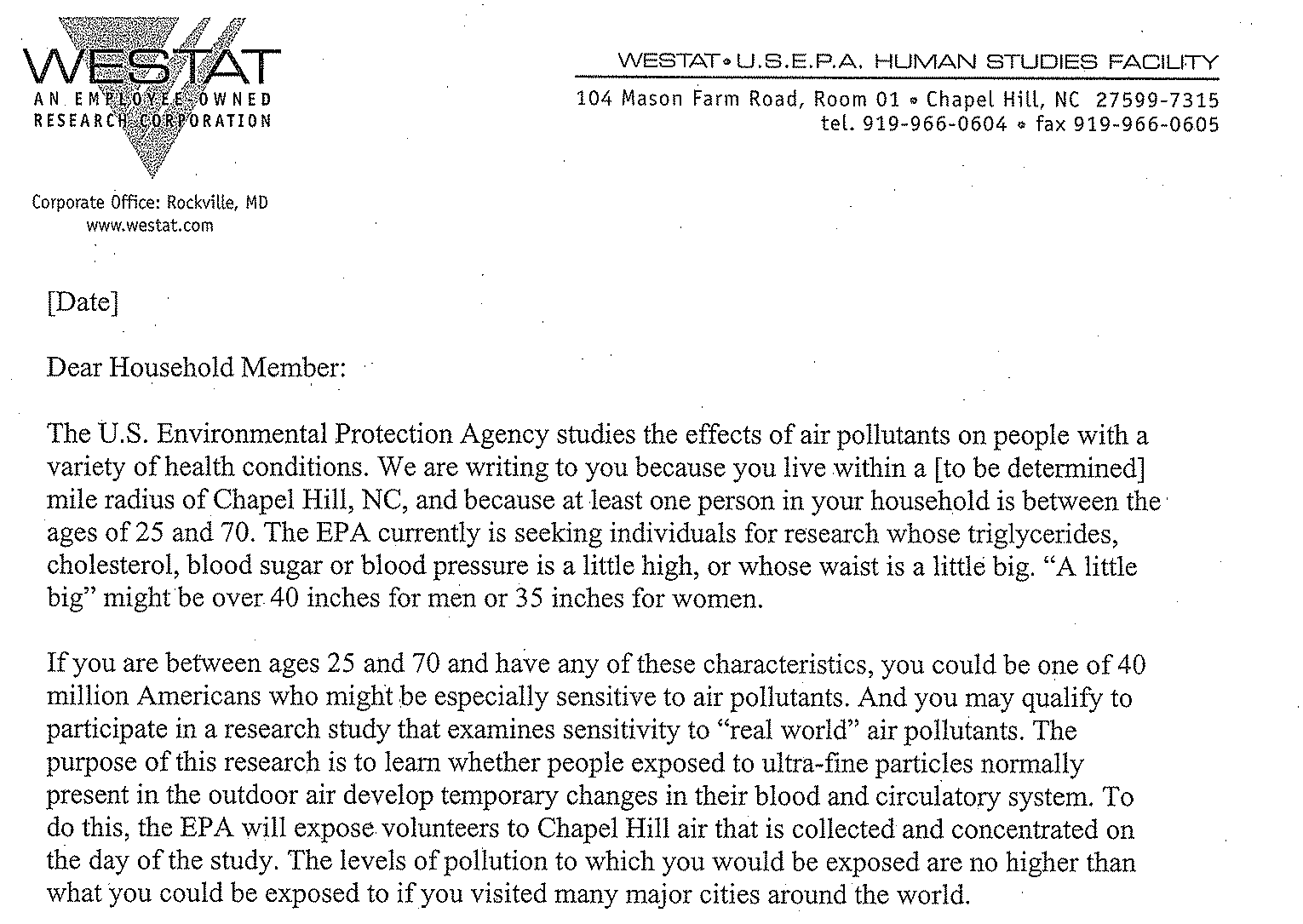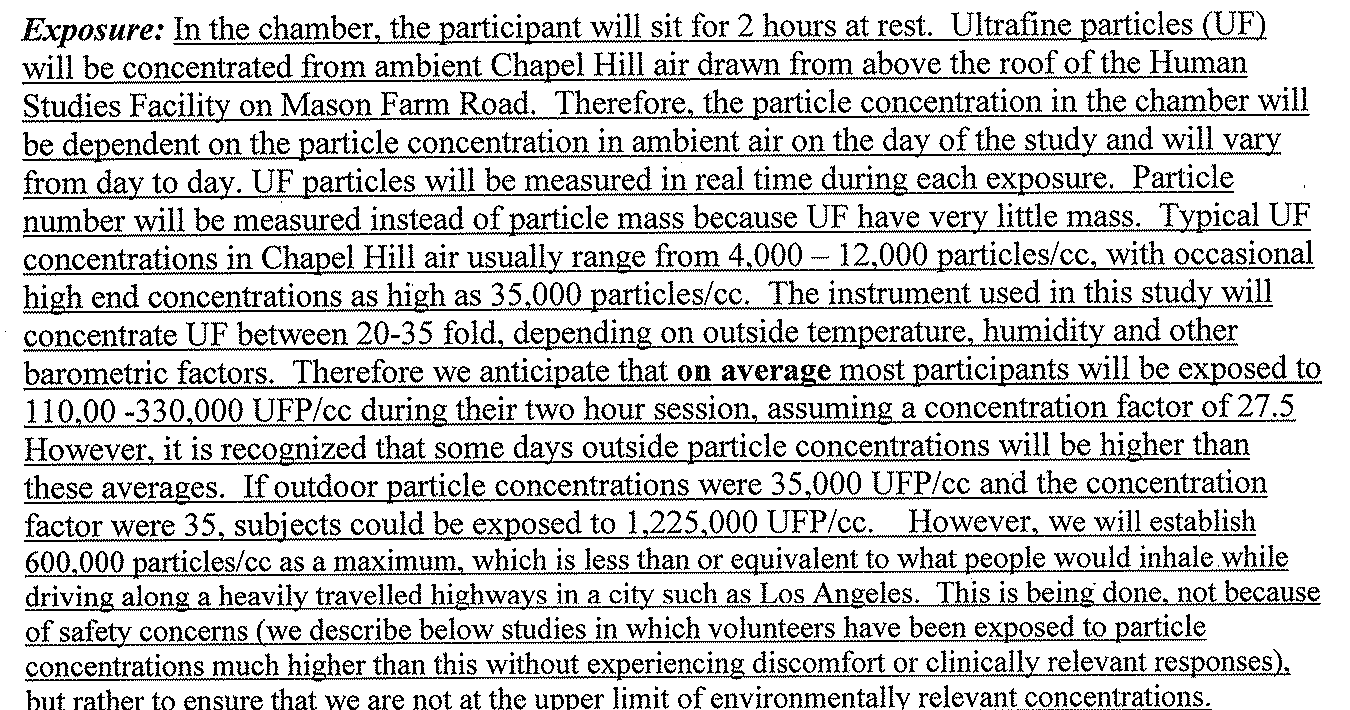In January 2007, the EPA decided to double down on the testing of vulnerable subpopulations by expanding its recruitment from merely adults with metabolic syndrome to elderly adults with metabolic syndrome as shown in the ad below.
The EPA justified the inclusion of the elderly as follows:
So the new recruits were too old to exercise but not too old to be exposed to lethal PM2.5.
The EPA employed a contractor (Westat) to recruit elderly adults with metabolic syndrome via letters to Chapel Hill, NC-area residents:
In December 2008, the EPA limited its liability to subjects injured during the experimentation to $5,000. Previously, injured study subjects would have had recourse only through the Federal Tort Claims Act. Note the the EPA informs study subjects that the University of North Carolina “has not set aside funds” for compensation. So study subjects risked their lives for about $1,155 in compensation, possibly as much as a $5,000 payoff if anything went wrong, and a right of action (for what that’s worth) under the Federal Tort Claims Act.
Around April 2010, the EPA updated its disclosure of the risks of particle exposure as follows:
This disclosure still fails to inform study subjects that they will be exposed to PM2.5 and how dangerous the EPA has already determined PM2.5 to be. And of course, Whatever the “risks” of driving along a Los Angeles freeway are, Chapel Hill, NC-area residents may not be exposed to them by the EPA under the Common Rule.
April 2010 also saw changes in disclosure by EPA to UNC about EPA’s view of PM2.5. An April 26, 2010 application to the UNC IRB stated:
Note that EPA attempts to thread the needle of truth with this explanation to the IRB — i.e., EPA tries to make it sound like its research into PM is essential while omitting mention that it has concluded there is no safe level of exposure to PM2.5 and PM2.5 can cause death as soon as hours after inhalation.
Also as part of the April 2010 application, the EPA increased the dose of PM — i.e, from 20-fold to 30-fold greater than ambient air in the Chapel Hill, NC-area. Note that EPA has no concerns about the safety of these exposures to PM — but compare this language with what the agency tells the public about PM2.5.
One reason EPA has no concern about the safety of exposing humans to high levels of PM is that it knows something that the general publci does not (from a September 2010 application to the IRB):
Of course, there is that pesky Case Report that EPA researchers reported in Environmental Health Perspectives in September 2011, in which they blame PM2.5 for the 58-year old woman’s health problems. Click here for the EPA-UNC documentation on that “adverse event.”






